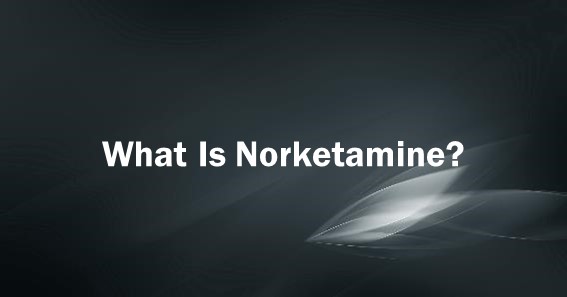Are you curious to know what is norketamine? You have come to the right place as I am going to tell you everything about norketamine in a very simple explanation. Without further discussion let’s begin to know what is norketamine?
In the realm of pharmacology and medicine, the search for new and innovative treatments is a continuous journey. One such intriguing compound that has garnered attention in recent years is “Norketamine.” Although relatively lesser-known than its parent compound, Ketamine, Norketamine holds significant promise as a potential therapeutic agent for various medical conditions. In this blog, we will delve into the world of Norketamine, exploring its origins, properties, and its potential role in modern medicine.
What Is Norketamine?
Norketamine is a metabolite of Ketamine, a well-known dissociative anesthetic that has been used for decades in both human and veterinary medicine. When Ketamine is administered, it undergoes biotransformation in the body, leading to the formation of several metabolites, with Norketamine being one of the most notable ones.
Ketamine’s therapeutic potential was initially recognized due to its unique ability to induce dissociation, analgesia, and anesthesia. Over the years, it has been widely used in surgical settings, especially for patients who may be at higher risk for traditional anesthetics. However, its effects on the central nervous system also caught the attention of researchers exploring new approaches to mental health treatment.
Potential Therapeutic Uses
- Antidepressant Effects: One of the most significant breakthroughs related to Norketamine is its potential as an antidepressant. Studies have shown that both Ketamine and Norketamine can rapidly alleviate symptoms of depression, even in individuals who were previously considered treatment-resistant. The exact mechanisms underlying this effect are still being studied, but it is believed that Norketamine’s interaction with certain neurotransmitter systems plays a crucial role in its antidepressant action.
- Neuroprotective Properties: Researchers have also investigated Norketamine’s neuroprotective abilities, particularly in the context of neurodegenerative disorders like Alzheimer’s disease. Preclinical studies suggest that Norketamine may help protect brain cells from damage and slow down the progression of certain neurodegenerative conditions.
- Pain Management: Norketamine’s potential as an analgesic agent is also being explored. It has been found to possess pain-relieving properties, and ongoing research aims to better understand how it could be harnessed for managing various types of pain.
Challenges And Future Prospects
Despite the exciting potential of Norketamine, there are some challenges that researchers and medical professionals must address. Firstly, as a derivative of Ketamine, Norketamine can still induce dissociative and psychotomimetic effects, albeit to a lesser extent. This aspect needs to be carefully considered when using the compound in therapeutic settings.
Additionally, the long-term effects and safety profile of Norketamine require further investigation. As with any novel treatment, a comprehensive understanding of its potential side effects and interactions with other medications is crucial.
Conclusion
Norketamine, the metabolite of Ketamine, has emerged as a promising candidate for various therapeutic applications. Its potential as a rapid-acting antidepressant and neuroprotective agent has sparked enthusiasm among researchers and healthcare professionals alike. While it shares some characteristics with its parent compound, the relatively reduced dissociative properties of Norketamine make it a potentially safer option for medical use.
As research on Norketamine continues, we may witness breakthroughs in the treatment of mental health disorders, neurodegenerative conditions, and pain management. Nevertheless, caution must be exercised, and thorough research is necessary to fully comprehend the compound’s effects, potential risks, and appropriate dosage guidelines.
Ultimately, Norketamine’s journey from an enigmatic compound to a transformative therapeutic agent holds promise for a brighter future in medicine, offering hope to those in need of effective and innovative treatment options.
There is more such information on popularweby
FAQ
What Is Norketamine Used For?
Description. Norketamine is one of the major metabolites of Ketamine, which is routinely used as an anesthetic. Norketamine is a potent antagonist of the N-methyl-D-aspartate receptor and is believed to contribute to the analgesic effects of ketamine.
Is Norketamine Psychoactive?
The major metabolic pathway is N-demethylation to an active metabolite norketamine by CYP3A4 (Figure 1) [18]. Norketamine, besides some psychoactive properties, also retains anaesthetic effects; this fact explains the maintenance of the therapeutic efficacy at lower blood ketamine concentrations [32].
What Is The Formula For Norketamine?
Norketamine | C12H14ClNO | CID 123767 – PubChem.
How Is Norketamine Formed?
Norketamine (5) is a major metabolite of ketamine (4) that is produced by cytochrome P450 enzymes in the liver. It goes on to be hydroxylated to form (2R,6R)-hydroxynorketamine.
I Have Covered All The Following Queries And Topics In The Above Article
What Is Norketamine Used For
What Is Norketamine
What Is Ketamine And Norketamine
What Is Norketamine Used For?
What Is Norketamine Metabolized Into
What Is Ketamine And Norketamine.
What Is Norketamine
Is norketamine a good antidepressant?
